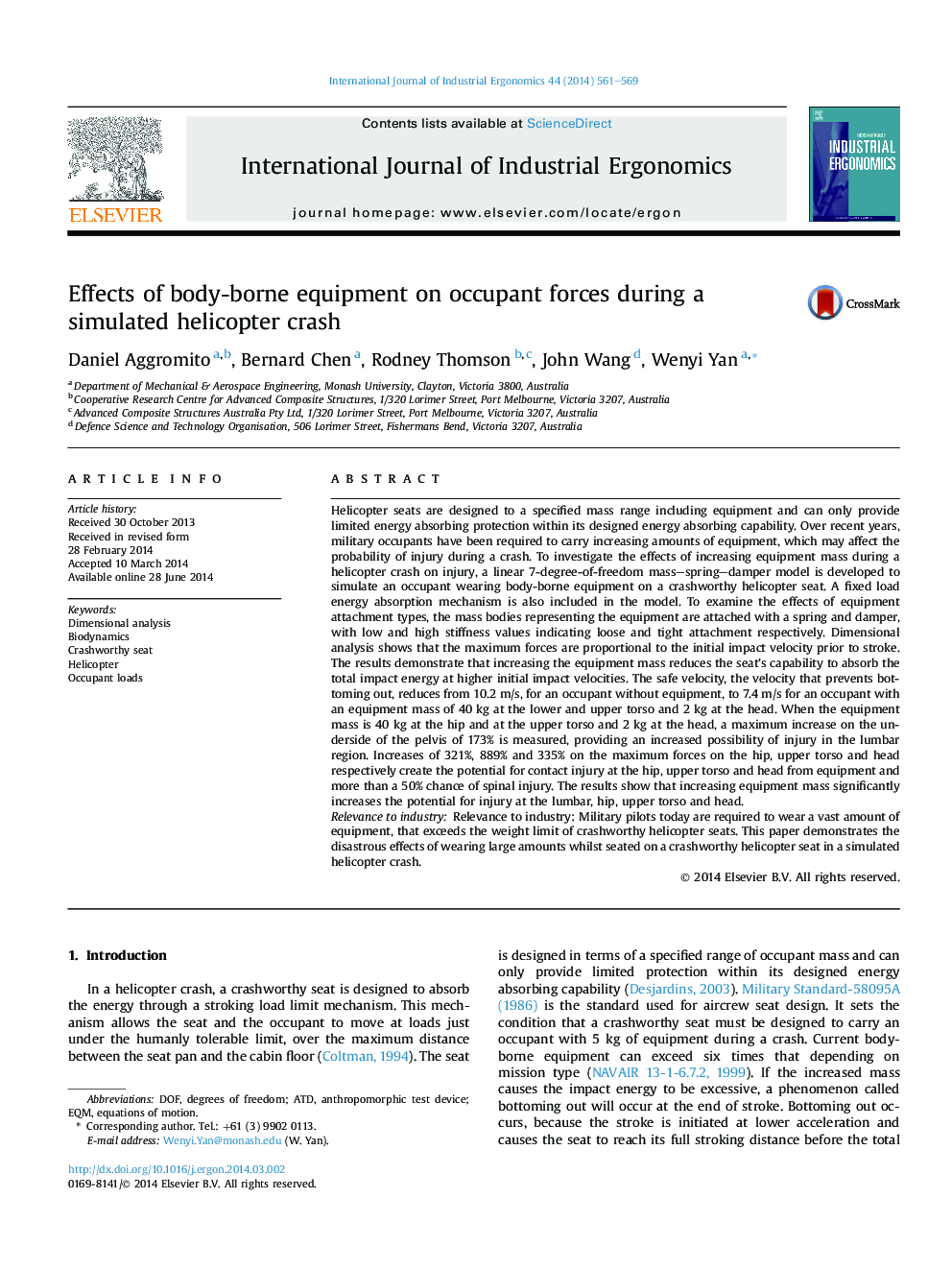| Article ID | Journal | Published Year | Pages | File Type |
|---|---|---|---|---|
| 1096064 | International Journal of Industrial Ergonomics | 2014 | 9 Pages |
•Increasing equipment mass increases the forces at all locations measured.•Equipment tightly attached provides the greatest forces at all locations.•The likelihood of spinal injury increases with increasing upper torso mass.•The maximum forces on the occupant are proportional to the initial impact velocity.•More equipment mass decreases the minimum impact velocity to cause bottoming out.
Helicopter seats are designed to a specified mass range including equipment and can only provide limited energy absorbing protection within its designed energy absorbing capability. Over recent years, military occupants have been required to carry increasing amounts of equipment, which may affect the probability of injury during a crash. To investigate the effects of increasing equipment mass during a helicopter crash on injury, a linear 7-degree-of-freedom mass–spring–damper model is developed to simulate an occupant wearing body-borne equipment on a crashworthy helicopter seat. A fixed load energy absorption mechanism is also included in the model. To examine the effects of equipment attachment types, the mass bodies representing the equipment are attached with a spring and damper, with low and high stiffness values indicating loose and tight attachment respectively. Dimensional analysis shows that the maximum forces are proportional to the initial impact velocity prior to stroke. The results demonstrate that increasing the equipment mass reduces the seat's capability to absorb the total impact energy at higher initial impact velocities. The safe velocity, the velocity that prevents bottoming out, reduces from 10.2 m/s, for an occupant without equipment, to 7.4 m/s for an occupant with an equipment mass of 40 kg at the lower and upper torso and 2 kg at the head. When the equipment mass is 40 kg at the hip and at the upper torso and 2 kg at the head, a maximum increase on the underside of the pelvis of 173% is measured, providing an increased possibility of injury in the lumbar region. Increases of 321%, 889% and 335% on the maximum forces on the hip, upper torso and head respectively create the potential for contact injury at the hip, upper torso and head from equipment and more than a 50% chance of spinal injury. The results show that increasing equipment mass significantly increases the potential for injury at the lumbar, hip, upper torso and head.Relevance to industryRelevance to industry: Military pilots today are required to wear a vast amount of equipment, that exceeds the weight limit of crashworthy helicopter seats. This paper demonstrates the disastrous effects of wearing large amounts whilst seated on a crashworthy helicopter seat in a simulated helicopter crash.
